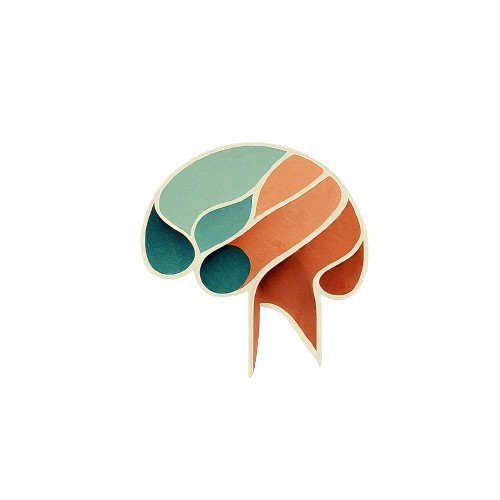Ketamine, once primarily known for its use in veterinary medicine and as an anesthetic, has emerged as a substance of concern in recent years. Its growing popularity as a recreational drug and potential for misuse have raised alarms among health professionals and addiction specialists. This guide delves into the world of ketamine addiction, exploring its effects, risks, and the path to recovery.
The Rise of Ketamine Misuse
Ketamine’s journey from medical marvel to street drug is a cautionary tale of how substances with legitimate medical uses can be co-opted for recreational purposes. Recent statistics paint a worrying picture:
- In 2020, 1.3% of 12th graders reported misusing ketamine for recreational purposes, nearly doubling from 0.7% just a year prior.
- The drug’s popularity has soared in party scenes, earning it nicknames like “Special K” and “Kit Kat.”
- Ketamine has joined the ranks of GHB and Rohypnol as a potential date rape drug, adding another layer of concern to its misuse.
What Is Ketamine?
Before diving into the addiction aspect, it’s crucial to understand what ketamine is and its intended uses:
Medical Applications
- Anesthesia: Ketamine was first synthesized in the 1960s and quickly found use as an anesthetic in both human and veterinary medicine.
- Pain Management: It’s used off-label for pain relief, particularly in cases of chronic pain.
- Mental Health Treatment: Recent research has explored ketamine’s potential in treating depression, anxiety, and PTSD.
Pharmacological Classification
- Ketamine is classified as a dissociative anesthetic.
- It’s a Schedule III controlled substance in the United States, indicating it has accepted medical uses but also potential for abuse.
How It Works
Ketamine primarily acts on the brain’s glutamate system, which is involved in:
- Memory formation
- Learning
- Mood regulation
This mechanism of action is what gives ketamine its unique effects and potential therapeutic benefits.
The Dark Side: Recreational Use and Abuse
Despite its medical benefits, ketamine has gained notoriety as a party drug. Here’s why it’s appealing to recreational users:
- Dissociative Effects: Users report feeling detached from their body and environment.
- Hallucinogenic Properties: At higher doses, ketamine can induce vivid hallucinations.
- Euphoria: Some users experience intense feelings of happiness and well-being.
- Short Duration: Effects typically last 30-60 minutes, making it attractive for party settings.
Street Names and Forms
Ketamine goes by various slang terms on the street:
- Special K
- Vitamin K
- Kit Kat
- Super Acid
- Jet K
It’s available in several forms:
- Liquid (often diverted from medical supplies)
- Powder (for snorting)
- Tablets (less common)
The Slippery Slope to Addiction
Ketamine addiction can develop quickly, often catching users off guard. Several factors contribute to its addictive potential:
1. Tolerance Development
- Regular users find they need increasingly larger doses to achieve the same effects.
- This tolerance build-up can lead to dangerous levels of consumption.
2. Psychological Dependence
- The euphoric and dissociative effects can be psychologically addictive.
- Users may rely on ketamine to escape reality or cope with stress.
3. Social Factors
- Peer pressure in party scenes can normalize regular ketamine use.
- The drug’s association with certain music genres and subcultures can reinforce usage patterns.
4. Self-Medication
- Some individuals may use ketamine to alleviate symptoms of depression or anxiety.
- This self-medication can lead to a cycle of dependence.
Recognizing the Signs of Ketamine Addiction
Identifying ketamine addiction early is crucial for effective intervention. Here are the key signs to watch for:
Physical Symptoms
- Excessive salivation
- Watery eyes
- Unexplained bruises (often occurring during intoxication)
- Chills and sweating
- Seizures (in severe cases)
- Restlessness and shaking
Psychological and Behavioral Signs
- Confusion and disorientation
- Paranoia and delusions
- Nightmares and sleep disturbances
- Low appetite
- Mood swings
- Impaired memory and concentration
Social and Lifestyle Changes
- Neglecting work, school, or personal responsibilities
- Strained relationships with family and friends
- Financial difficulties due to drug spending
- Loss of interest in previously enjoyed activities
- Isolation from non-using friends and family
The “K-Hole” Experience
A particularly concerning aspect of ketamine use is the “K-hole” phenomenon:
- This refers to an intense dissociative state where users feel completely detached from their body and surroundings.
- While some users seek this experience, it can be terrifying and dangerous.
- The K-hole state leaves users vulnerable to accidents and assault.
The Long-Term Impact of Ketamine Addiction
While ketamine may not be as immediately life-threatening as some other drugs of abuse, long-term use can have severe consequences:
Physical Health Effects
- Bladder Damage: “Ketamine bladder syndrome” can cause severe urinary tract problems.
- Liver Damage: Chronic use can lead to liver dysfunction.
- Cognitive Impairment: Memory, attention, and decision-making abilities may suffer.
- Respiratory Issues: Especially when combined with other depressants.
Mental Health Consequences
- Increased Risk of Depression: Paradoxically, while ketamine is being studied as a treatment for depression, chronic abuse can worsen depressive symptoms.
- Anxiety and Panic Disorders: Long-term use may exacerbate anxiety.
- Psychosis: In some cases, ketamine abuse has been linked to psychotic symptoms.
Social and Economic Impact
- Job Loss: Impaired performance and absenteeism can lead to unemployment.
- Relationship Breakdown: Addiction often strains personal relationships.
- Financial Hardship: The cost of sustaining an addiction can be substantial.
The Dangers of Ketamine Overdose
While ketamine overdose is less common than with opioids, it can still occur and be dangerous:
Overdose Symptoms
- Severe confusion
- Extremely high blood pressure
- Chest pain
- Loss of consciousness
- Seizures
- Respiratory depression
Overdose Risks
- The risk of overdose increases when ketamine is combined with other substances, especially depressants like alcohol or opioids.
- The World Health Organization estimates that lethal doses begin around 11 mg/kg of body weight when injected.
Breaking Free: Treatment Options for Ketamine Addiction
Recovery from ketamine addiction is possible with the right support and treatment approach. Here’s an overview of available options:
1. Medical Detoxification
- While ketamine doesn’t typically cause severe physical withdrawal, medical supervision can help manage symptoms like anxiety and cravings.
- Detox is often the first step in a comprehensive treatment plan.
2. Inpatient Rehabilitation
- Provides a structured environment free from triggers and temptations.
- Intensive therapy and support to address underlying issues.
- Typically lasts 30-90 days, depending on individual needs.
3. Outpatient Programs
- Suitable for individuals with milder addictions or as a step-down from inpatient care.
- Allows patients to live at home while attending regular therapy sessions.
- Intensive outpatient programs (IOPs) offer more frequent sessions.
4. Cognitive-Behavioral Therapy (CBT)
- Helps identify and change thought patterns that lead to drug use.
- Teaches coping skills to manage cravings and high-risk situations.
- Can be delivered in individual or group settings.
5. Motivational Enhancement Therapy
- Aims to strengthen motivation for change.
- Helps resolve ambivalence about quitting ketamine.
6. Family Therapy
- Addresses family dynamics that may contribute to addiction.
- Educates family members on how to support recovery.
7. Support Groups
- 12-step programs like Narcotics Anonymous can provide ongoing support.
- SMART Recovery offers a science-based alternative to 12-step programs.
8. Dual Diagnosis Treatment
- For individuals with co-occurring mental health disorders.
- Addresses both addiction and mental health issues simultaneously.
The Road to Recovery: What to Expect
Recovery from ketamine addiction is a journey that requires commitment and support. Here’s what individuals in recovery might experience:
1. Withdrawal Phase
- Symptoms may include anxiety, cravings, and mood swings.
- Typically lasts a few days to a week.
2. Early Recovery
- Focus on developing coping skills and establishing a drug-free lifestyle.
- High risk of relapse; requires vigilance and support.
3. Ongoing Recovery
- Continued therapy and support group attendance.
- Rebuilding relationships and pursuing life goals.
4. Long-Term Maintenance
- Developing a sustainable recovery lifestyle.
- Addressing any underlying mental health issues.
Prevention and Education: Key to Combating Ketamine Addiction
Preventing ketamine addiction starts with education and awareness. Here are some key strategies:
- School-Based Programs: Educating young people about the risks of ketamine and other drugs.
- Community Outreach: Providing information and resources in high-risk areas.
- Healthcare Provider Education: Ensuring medical professionals understand the risks of ketamine misuse.
- Harm Reduction Strategies: For those who continue to use, promoting safer practices to minimize harm.
Hope for a Ketamine-Free Future
Ketamine addiction is a serious issue, but with increased awareness, effective treatment options, and ongoing support, recovery is achievable. If you or someone you know is struggling with ketamine addiction, don’t hesitate to seek help. Remember, the journey to recovery may be challenging, but a healthier, drug-free life is within reach.
By understanding the risks, recognizing the signs of addiction, and knowing the available treatment options, we can work together to combat ketamine addiction and support those on the path to recovery.



